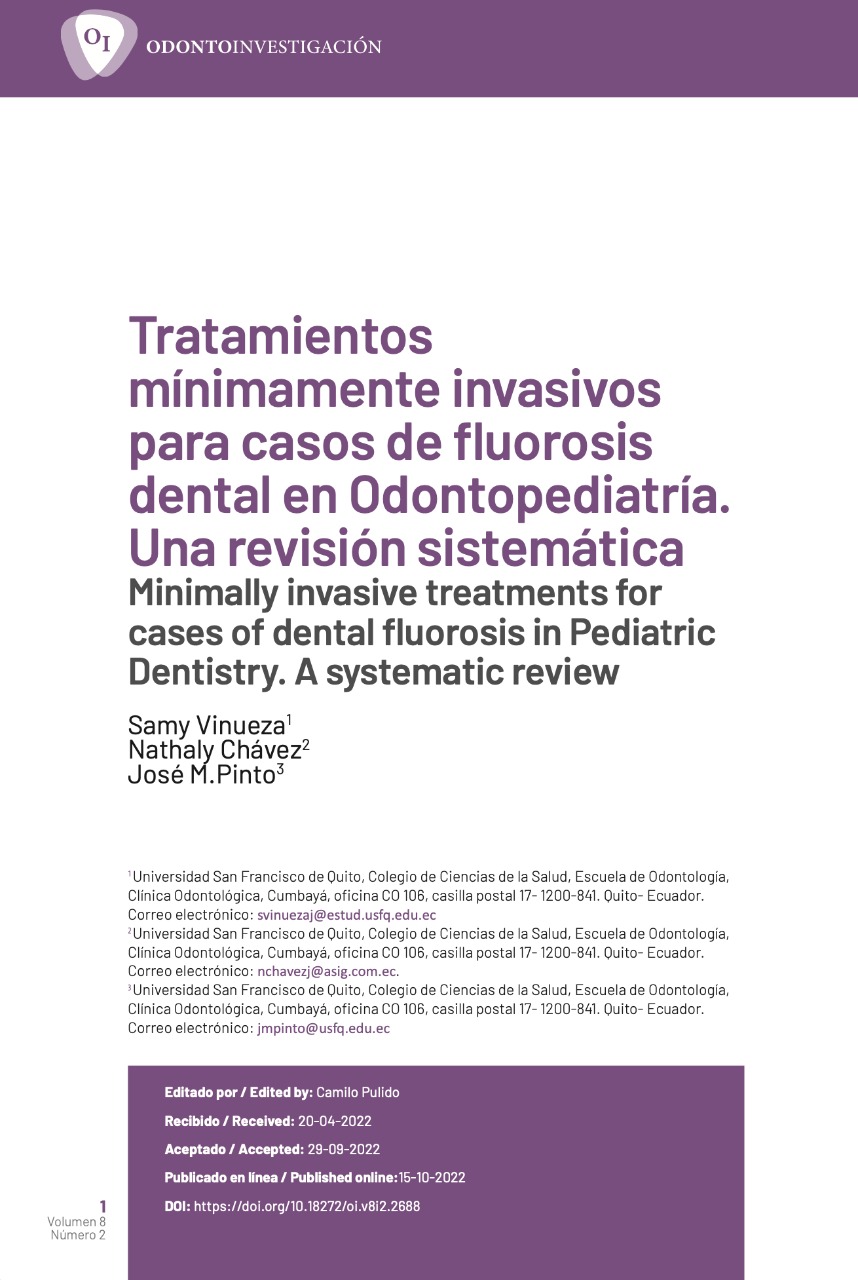Tratamientos mínimamente invasivos para casos de fluorosis dental en Odontopediatría. Una revisión sistemática
Main Article Content
Abstract
Objective. The objective of this research was to determine the most effective minimally invasive treatment for cases of fluorosis in children and adolescents, taking into account the degree of severity through bibliographic review. Materials and Methods. Literature research was performed from January 2017 to October 2021 on minimally invasive treatments for cases of dental fluorosis in children and adolescents in five scientifically recognized databases in the field of health (Pubmed Central, Medline, Scopus, Science Direct and Cochrane Library). Following the PRISMA Methodology, of 900 articles resulting from the initial search, through the analysis of inclusion/exclusion criteria and quality of scientific evidence; 5 scientific articles are included for qualitative evaluation. Results. For the purposes of this review, the five studies selected with a high quality of evidence were clinical trials. The total number of participating girls/boys and adolescents was 287 with an age range of 6 to 17 years. These cases of dental fluorosis were treated with microabrasion, bleaching, application of infiltrating resin (ICON, DMG) and combined therapies. Said techniques present an efficacy that is inversely proportional to the degree of severity of dental fluorosis, being highly effective in masking minor lesions. Conclusion. The resin infiltration technique with double infiltration for 3 minutes and combined with whitening exhibits better aesthetic results and fewer limitations/adverse effects for cases of mild and moderate dental fluorosis (in stages 1 to 4 within the Thylstrup and Fejerskov index) in pediatric and adolescent patients.


